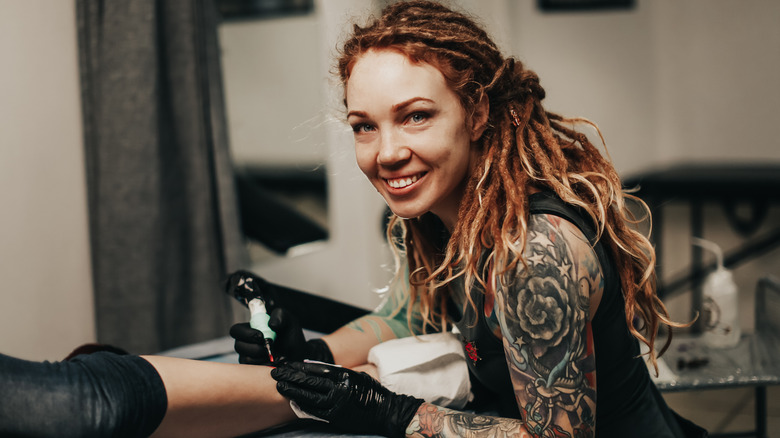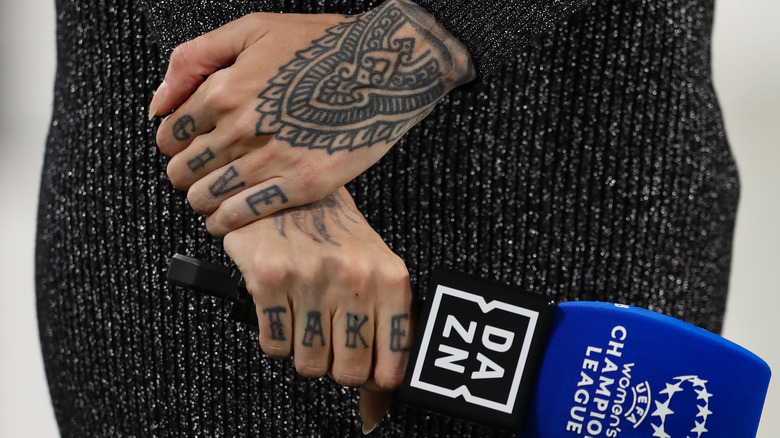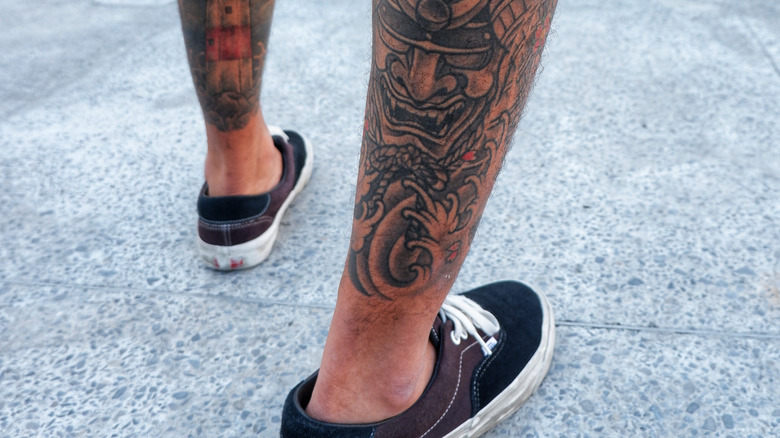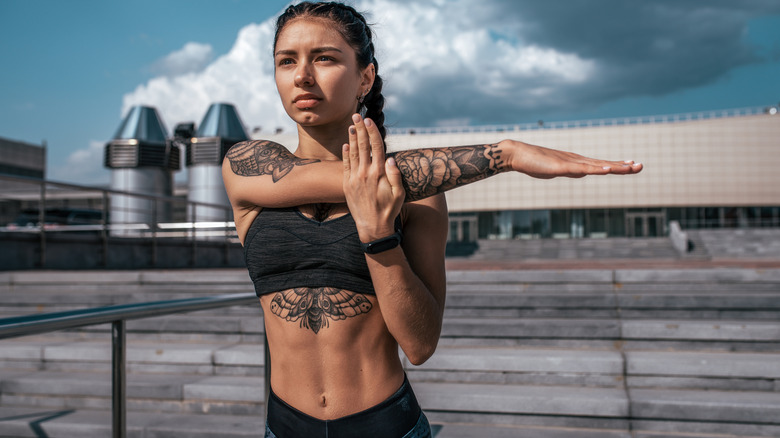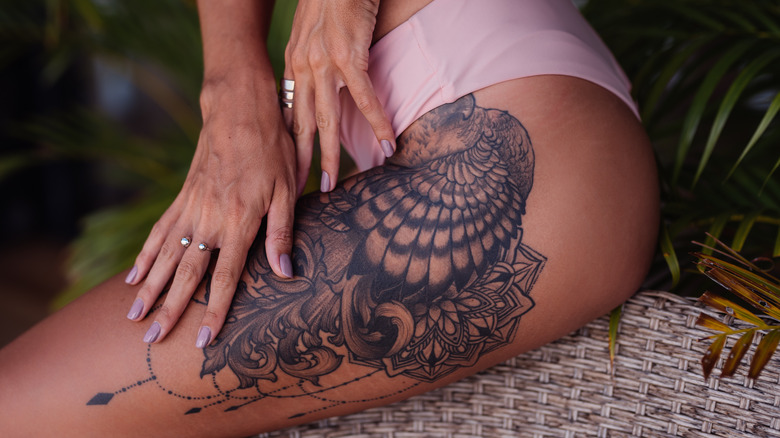Tattoo Locations Most Likely To Get Infected
Getting a tattoo can be a fun and exciting process, but there are also a lot of important factors to take into consideration. There's design, placement, and, of course, aftercare.
The latter is something many people don't give enough attention to, but taking proper care of your tattoo after you get it is a key part of the healing process, and is essential in maintaining the integrity of the tattoo. Keeping your new tattoo clean, dry, and sterile minimizes the possibility of infection. It starts with talking to your tattoo artist about aftercare expectations, from what to use to clean your new ink, to how long it should stay covered.
Still, a lot of people skip out on this important step and find themselves with an infected tattoo. Believe it or not, some spots where you get inked are more susceptible to infections than others. If you're getting a new tattoo, these are the locations on your body to keep a close eye on, to ensure your skin is safe and healing happens the best it can. Whether it's your first tattoo or your 50th, an infection can happen if you don't pay special attention to these areas.
Hand and foot tattoos are exposed to a lot of germs
Hand tattoos have become increasingly popular in recent years as the stigma surrounding tattoos in the workplace has significantly lessened. Feet tattoos have also seen an increase, but both carry similar risks when it comes to infection.
It's impossible to avoid touching germy surfaces with your hands. While your feet don't come in contact with as many surfaces, wearing open shoes can expose them while closed shoes serve as a breeding ground for other kinds of bacteria. As a result, both are places that need a lot of TLC when it comes to tattoo aftercare.
"Foot tattoos may have a greater chance of infection due to the proximity with the ground and diligent care should be taken to protect your tattoo from becoming excessively dirty and to wash it multiple times a day to keep it clean," Whole Addiction Tattoo explained in a post about hand and foot tattoo aftercare. "Hand tattoos are similar to foot tattoos in that they tend be more sensitive, more likely to lose ink during healing and more prone to infection."
Areas that don't get adequate blood flow can also have trouble healing
If you paid attention in biology, you know that the heart is the pump that delivers blood and oxygen throughout the body (via University of Michigan Health). But in the parts of the body that are farthest from the heart, circulation can be less efficient. That's what makes tattoos on the calves and ankles more problematic when it comes to the healing process.
"The lower legs can be higher risk of infection just because the vascular supply is not as effective there," Dr. Jeremy Fenton, a board-certified dermatologist based in New York City, told Bustle. "The farther you get from the heart, especially below the heart, the harder it is for the body to heal. For lower leg tattoos, it is very important to be extra diligent about wound care when the tattoo is healing."
High-friction areas present a lot of possibilities for problems
Getting tattoos on high-friction areas of your body requires taking it easy on those body parts while your tattoo heals. In some spots that's harder to achieve than others, because rubbing is nearly impossible to avoid and thus ends up keeping the wound open and susceptible to infection for longer.
"These would be areas where there may be chronic friction from clothing, such as along the waistband, or areas of a lot of movement, such as on joints like elbows or knees," Dr. Fenton told Bustle.
One way to lessen the friction is to wear loose clothing, according to Dan Hunter of Authority Tattoos. "Wearing loose clothing also prevents the material from sticking to the tattoo," Hunter said. "If clothing sticks, it can get stuck in the fluids healing your wound. When you pull it away, it may pull ink with it as well."
Areas that you shave can also encounter issues
What's important to remember about your new tattoo is that you should treat it with the same care you'd treat an open wound, since that's effectively what it is. The skin is incredibly sensitive. As a result, you want to minimize things that could irritate it or present an infection (via Bustle).
"You should wait at least two weeks or until the tattoo is healed to remove hair," suggested Dr. Stacy Chimento, a Miami-based, board-certified dermatologist (via Byrdie). "To be sure when your tattoo is fully healed, you can ask your tattoo artist."
Experts explain that any damage that happens to the skin while shaving, from ingrown hairs to nicks in the skin, can cause the tattoo to lose ink and impact the finished result once healing is done. Additionally, they add to the risk of infection, which can also impact your tattoo's quality when all is said and done.
